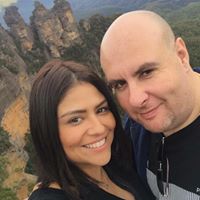Ok, I've found some info from Jag PDF that sheds some light on the subject, so here's what I've got so far: 3.2.1 TCM The TCM controls the operation of the transmission. The TCM processes information received in both analogue and digital form such as: • Transmission Input Shaft Speed (ISS). • Output Shaft Speed (OSS). • Throttle pedal position. • Gearshift selector position. • Engine torque. • Engine speed. • Transmission Fluid Temperature (TFT). • Brake pedal status. • Engine oil temperature. • Engine Coolant Temperature (ECT). • Anti-lock Braking System (ABS) wheel speed. This information is then used by the TCM to decide which shift pattern to select and for shift energy management. Electro-hydraulic solenoid valves and pressure regulators control the transmission gear changes. Five pressure regulators and one solenoid valve are used to control direct transmission fluid flow to select internal clutches and control the fluid pressure at the clutch. A separate pressure regulator is used exclusively for the TCC control. The TCM monitors all TCM inputs and outputs to confirm correct system operation. If a fault occurs the TCM is able to perform a default action and inform the driver of the problem, this is by the instrument pack message center. 3.2.2 Solenoids The hydraulic module contains one solenoid valve. The solenoid valve is actuated by the TCM and has two positions of open or closed, it is used to switch the position valve. There are six electronic pressure control valves, these convert an electric current into a proportional hydraulic pressure. The solenoids are energized by the TCM and actuate the valves belonging to the relevant switching elements. 3.2.3 Controller Area Network Interface For the TCM to be able to perform shift point and shift quality management a number of external signals are required. For shift point management alone the TCM requires an OSS sensor, throttle pedal position, brake pedal status and gear selector position. The Controller Area Network (CAN) bus is used to share information between control modules. The TCM obtains most of its required data over the CAN bus from the electronic engine controls, J-Gate and ABS, Instruments pack and diagnostic tools. 3.2.4 Brake Pedal Position Switch The Brake Pedal Position (BPP) switch tells the TCM when the brakes are applied, and disengages the TCC. The BPP switch closes when the brakes are applied and opens when they are released. The BPP is also used to disengage the brake shift interlock and stops gradient calculations. Jaguar Cars Revision Date: October 2003 Page 8 of 30 3.2.5 Engine Coolant Temperature Sensor The ECT sensor detects engine coolant temperature and supplies the information to the TCM. The ECT sensor is used to control the TCC operation. 3.2.6 Accelerator Pedal Position Sensor The Accelerator Pedal Position (APP) sensor is a potentiometer mounted on the accelerator pedal. The APP sensor detects the position of the accelerator pedal and sends this information to the Engine Control Module (ECM). The APP sensor is used for shift scheduling and TCC lock-up. 3.2.7 Input Shaft Speed Sensor The Input Shaft Speed (ISS) sensor is a Hall effect type sensor. The ISS sensor is mounted internally on the transmission and is located on the TCM and main control valve body unit. 3.2.8 Output Shaft Speed Sensor The Output Shaft Speed (OSS) sensor is a Hall effect type sensor. The OSS sensor is mounted internally on the transmission is used for shift scheduling. 3.2.9 Transmission Fluid Temperature Sensor The TCM utilizes one TFT sensor located on the main control valve body. The TCM uses the sensor input to activate various shift strategies. The sensor is in the form of a temperature dependent resistor. The temperature sensor performs plausibility checks on each sensor reading. Obviously, the transmission oil temperature should not jump in value excessively between sensor readings. If the inputs from the temperature sensor are outside the working range it possible that the sensor is short or open circuit. 3.2.10 Position sensor The TCM uses the position of this switch housed on the TCM and main control valve body, to determine the selected gear range on the automatic side of the gearshift selector lever. Jaguar Cars Revision Date: October 2003 Page 9 of 30 The gearshift selector lever is connected to the transmission by a cable, which operates the transmission selector shaft between positions park (P), reverse ®, neutral (N) and drive (D). The TCM detects the driver's choice of manual range selection (5,4,3,2) by means of a 3-bit code generated by the J-gate. This 3-bit code is then transformed in to a CAN message by the J-Gate module and transmitted on to the CAN bus where it is detected by the TCM. The TCM uses this information to generate the CAN message 'Gear Position Selected', which must not be confused with the similar message 'Gear Position Actual' indicating the current mechanical gear ratio activated by the TCM. Movement of the lever between park, reverse, neutral and drive manually controls the flow of transmission fluid, the TCM having control of the forward gear selected in drive. Additional movement of the lever to 5,4,3 and 2 positions does not manually modify the fluid flow, the TCM detects these positions, and controls the gear selected electronically. Full doc: http://www.europeantransmissions.com/Bulletin/DTC-jag/6hp_trans.pdf



